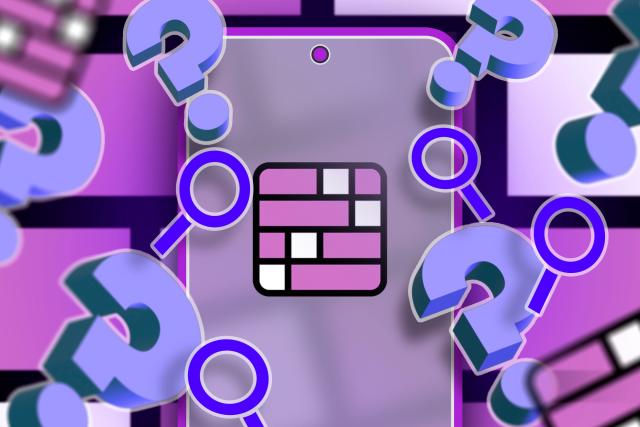The NYT Connections hints puzzle is a unique and challenging game that tests your word association skills. This game requires sharp thinking, creativity, and strategic planning. With the right strategies, you can boost your puzzle-solving skills and enjoy more success. Here are some valuable hints to help you master the NYT Connections puzzle.
Understand the Basics of NYT Connections Hints
Before diving into strategies, it’s essential to understand the game’s basics. The NYT Connections Hints puzzle involves finding connections between different words. You start with a set of 16 words, which you need to group into four categories of four words each. Each group of words is related in a specific way.
Look for Obvious Connections First
Begin by identifying any obvious connections among the words. These could be synonyms, antonyms, or related phrases. Finding the most apparent connections first helps you narrow down the remaining words.
Use Word Categories to Your Advantage
Think about common word categories. These might include themes like colors, animals, foods, or countries. Organizing words into these familiar groups can help reveal hidden connections.
Pay Attention to Word Play and Double Meanings
The NYT Connections hints puzzle often includes words with multiple meanings. Be aware of puns, homonyms, or words that can belong to more than one category. Understanding double meanings can help you find less obvious connections.
Practice Process of Elimination
If you can’t find a connection immediately, try eliminating words that don’t fit. Removing unrelated words helps you focus on the words that are more likely to connect. This method reduces the complexity and increases your chances of success.

Break Down Each Word’s Possible Connections
Consider each word individually and brainstorm all its possible connections. Think about synonyms, antonyms, common phrases, and cultural references. This brainstorming process helps generate ideas and uncover less obvious links.
Use Context Clues from Grouped Words
As you form groups, use the context of the grouped words to find additional connections. Words within a group can provide hints about the connections of remaining words.
Stay Open to Unusual or Unexpected Connections
Sometimes, the NYT Connections hints puzzle includes unexpected or creative word groupings. Stay open-minded and think outside the box. Don’t limit yourself to traditional word associations.
Time Management: Don’t Spend Too Long on One Word
If you find yourself stuck on a particular word, move on. Spending too much time on one word can be frustrating and counterproductive. Focusing on other words might reveal connections you hadn’t considered.
Review Past Puzzles for Insight
Looking at previous NYT Connections hints puzzles can provide helpful insights. Pay attention to patterns, themes, and word choices. Learning from past puzzles can improve your future performance.
Keep Practicing Regularly
Like any skill, mastering the NYT Connections hints puzzle takes practice. Make it a habit to play regularly. The more you practice, the better your brain becomes at recognizing patterns and connections.
Create Your Own Word Lists
To sharpen your word association skills, create your own word lists. Group words by themes, meanings, or categories. Practicing with your own lists can help you understand how words connect.
Use Hints Sparingly
The NYT Connections hints game provides hints, but use them sparingly. Relying too much on hints can hinder your learning process. Challenge yourself to find connections before resorting to hints.
Stay Calm and Focused
Staying calm is crucial when solving puzzles. If you’re feeling stuck or frustrated, take a deep breath. A relaxed mind is more likely to find creative solutions.
Play with Friends or Family
Playing with others can bring fresh perspectives. Friends or family members might see connections that you missed. Collaborating with others can make the game more enjoyable and insightful.
Learn from Your Mistakes
Every puzzle is a learning opportunity. If you make a mistake, analyze it. Understand why the connection didn’t work and apply that knowledge to future puzzles.
Pay Attention to Common Word Pairings
Notice common word pairings and phrases. The NYT Connections hints puzzle often uses words that are frequently found together in everyday language. Recognizing these pairings can help you quickly form groups.
Develop a Systematic Approach
Develop a systematic approach to solving the puzzle. Start with the most obvious connections, then move on to more complex ones. A structured method helps you stay organized and reduces the chance of overlooking connections.
Practice Mindfulness to Boost Cognitive Function
Mindfulness exercises can improve concentration and cognitive function. Practice deep breathing or meditation to clear your mind before tackling a challenging puzzle. A focused mind is more likely to find subtle connections.
Don’t Be Afraid to Make Guesses
If you’re stuck, don’t be afraid to make educated guesses. Trying different combinations can reveal new patterns or connections you hadn’t considered. Guessing is part of the learning process.
Use Online Resources and Communities
Online forums and communities can provide valuable insights. Many puzzle enthusiasts share their strategies and tips for solving the NYT Connections hints puzzle. Engaging with others can help you learn new approaches.
Understand the Puzzle’s Theme
Each NYT Connections hints puzzle often has a theme. Understanding the theme can provide clues about how the words might connect. Look for hints in the word set that suggest a broader theme.
Stay Positive and Have Fun
Remember that the NYT Connections hints puzzle is meant to be fun. Don’t get discouraged if you don’t solve it right away. Stay positive, keep practicing, and enjoy the challenge!
Conclusion
Mastering the NYT Connections hints puzzle requires practice, strategy, and patience. By understanding word associations, using a systematic approach, and staying open to creative connections, you can boost your puzzle game. Keep these strategies in mind, and you’ll be on your way to becoming an NYT Connections pro. Happy puzzling!


